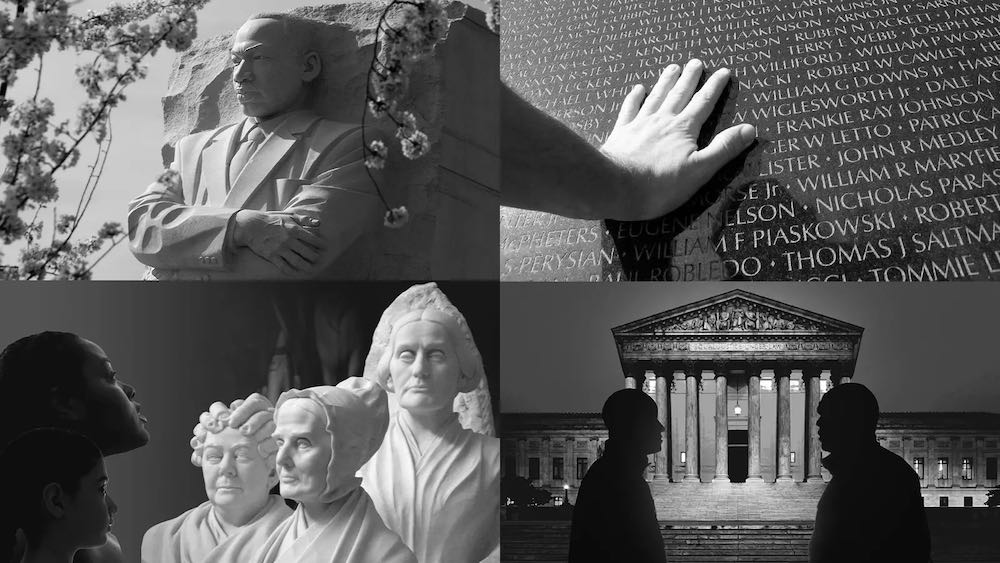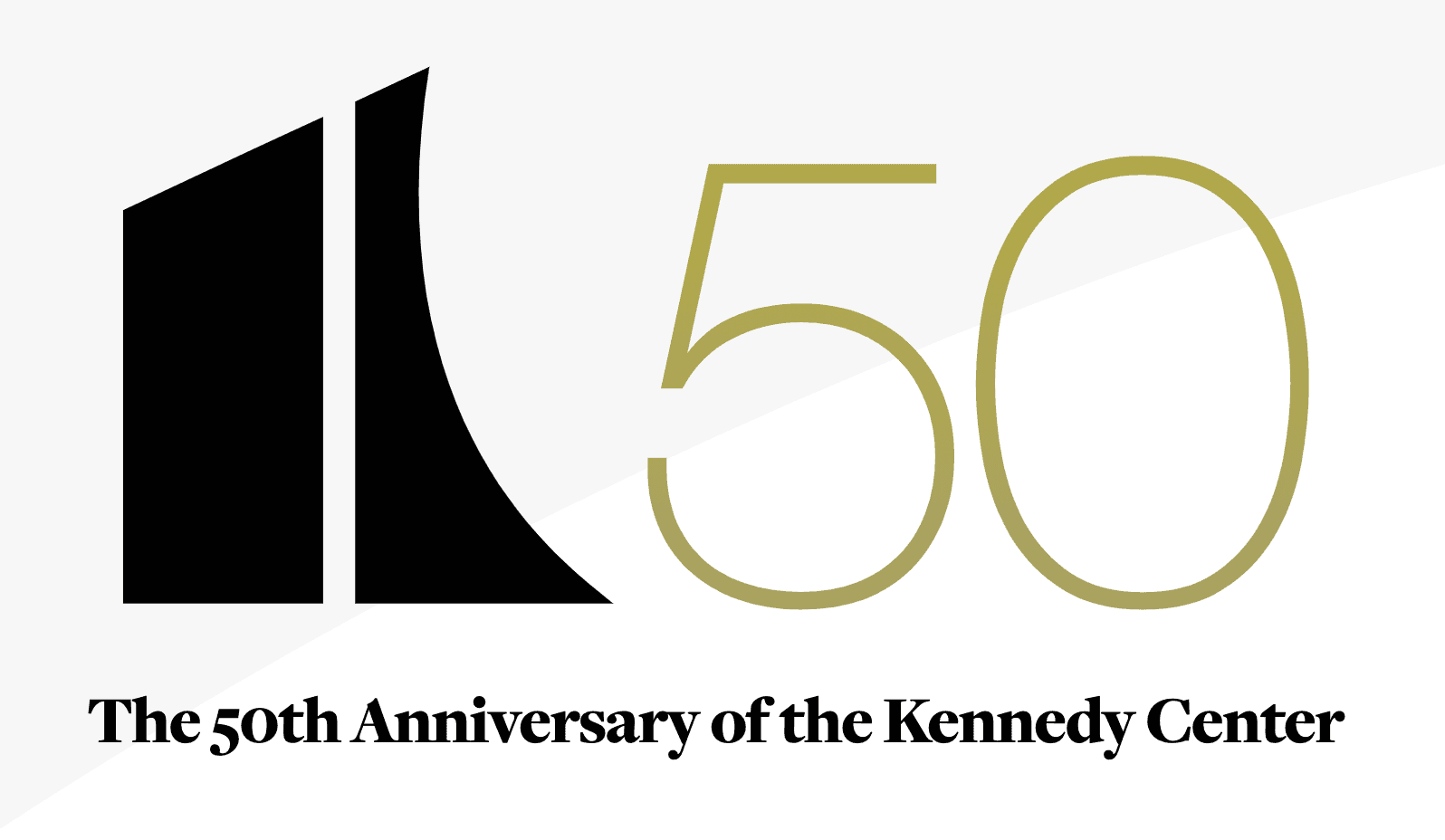Washington National Opera (WNO) shares its Kennedy Center home with ballet, theater, and music (from orchestral to jazz and recently hip hop) and, under Artistic Director Francesca Zambello, has always delivered seasons balancing grand classical opera headlining international stars with programs developing American singers and original works. As the company rehearses Written in Stone — a world premiere inspired by four of Washington, DC’s iconic monuments — I was curious to learn how WNO, emerging so recently from the shadow of COVID, would rise to the challenge of producing a fitting tribute to Kennedy Center’s 50th anniversary.
Francesa Zambello: It was a little daunting, especially remembering that Leonard Bernstein wrote Mass for the opening. So I thought, Why don’t we celebrate the city’s monuments and also highlight our commitment to new American works through our AOI [American Opera Initiative]?

Susan Galbraith: That seems right. The Kennedy Center was intended as a living monument, and the city of Washington is certainly crowded with monuments. Were you also thinking of the conversation in the last few years examining the legacy of racism, with many calling for the pulling down of selected statues and monuments?
It was indeed a fusion of all those ideas that became the genesis of Written in Stone, our group of four short operas commissioned for this important anniversary celebration.
Commissioning short original operas through the American Opera Initiative, a series you started over ten years ago and continue to champion, will be your strongest legacy. I always am excited by how you continue to raise larger questions for our community through the specific art of opera by developing and producing original short contemporary operas that address relevant issues of our times.

The 50th anniversary was also an opportunity to bring back together special artists who have been part of the program. Everyone is connected somehow to the American Opera Initiative or the Kennedy Center.
Is there something ironic that the most iconic permanent work at the Center is the bust of John F. Kennedy, and are you concerned this might be inviting us to consider whether this is yet another white male monument to be pulled down?
Our idea was that monuments would inspire stories, and the creative artists would choose their own monument on which to tell a story. We didn’t ask them to write about a monument but about the stories monuments can inspire. We are also doing a huge video installation on the side of The Reach, and that will start next week. It will include phrases about monuments and what they mean, and it’s in response to furthering the dialogue.
Can you speak a little about how each piece is being presented?
We’re always looking for collaboration at the Kennedy Center and the first piece features Jason Moran, who directs the Jazz program here, and his wife, the mezzo-soprano Alicia Hall Moran, which seemed a fitting collaboration. We always wish we could do more with jazz such as our collaboration for the jazz opera Champion a few years ago. For this program, Jason and Alicia collaborated on an eight-minute prologue, “Chantal,” which sets out the theme of the entire program, asking, “What is a monument? What does a monument mean?”
“Rise” is based on the women’s suffragist statue, which is notable for two reasons. First, it was shoved in a closet and forgotten and then finally discovered, so the story goes, by a janitor. But it also contains an enigma in that there are three identifiable figures. But a fourth face has been left uncarved. Was it meant to have been an African American figure or, as some say, the first female president yet to come? It raises the question we face today “What stories are left out of history?” The female creative team of Kamala Sankaram and A.M Homes has crafted a smart work, a time-travel piece, about a girl scout encountering a character called “A Powerful Woman” (inspired by Nancy Pelosi and the original sculptor). It examines what a girl can become in life and how she can be inspired.
This will be followed by Carlos Simon’s piece “it all falls down,” with Marc Bamuthi, about a father and son, both Black pastors. The son is gay, and it takes place at a rally about gay rights on the steps of the Supreme Court.
Carlos’s first opera was a 20-minute opera, “Night Traveler,” through our AOI program. Here he is now, the composer-in-residence at the Center, while Marc Bamuthi is director of social impact. We couldn’t be more thrilled and a little protective of all these members of our family.
And tell me about your choice of composer Huang Ruo and a playwright I’ve much admired, David Henry Hwang. I heard a very powerful aria from their new work when you presented excerpts at the Guggenheim. Weren’t they teamed up previously in an AOI commission?
Several years ago, yes, in a work called “American Soldier,” based on a true story about an Asian American soldier in Afghanistan whose harassment led him to commit suicide. It’s the last piece, longer, and it takes the whole second half. This is another powerful story, and they chose the Vietnam Memorial as their inspiration. It’s a four-character chamber opera, with one of the characters being Maya Lin, the architect who won the competition to design this monument while still a student at Yale; and another, Robert McNamara, the former secretary of defense under presidents Kennedy and Johnson, who led the escalation of the war in Vietnam. There is also a Vietnam vet and the wife of a Vietnamese soldier.
When soldiers and families gathered at the Vietnam Memorial the first spring after it opened, I remember it felt like the beginning of the necessary healing. Was that the intent of this work and perhaps your goal for this series?
And building bridges. It’s also a real synthesis of ten years of AOI.
If Written in Stone highlights your commitment to bring American artists together and push forward a new century for opera, what else does this spring season hold?
Also in March, we will present Mozart’s almost feverish romantic comedy, Così fan tutte. I wanted to bring performer and orchestra together on stage and create an intimate experience with this production by placing it in the Eisenhower. It matches up lovers and makes us all consider anew who are the schemers and who are the fooled in this romantic entanglement. The lovers will be played by soprano Laura Wilde and mezzo-soprano Rihab Chaieb plus tenor Kang Wang and baritone Andrey Zhilikhovsky. Thrown in to set the experiment in motion is the great bass singer Ferruccio Furianetto.
We will end the season with the crowd-pleasing blockbuster Carmen. The cast promises sizzling stage chemistry, including Isabel Leonard taking on for the first time the title role plus Michael Fabiano (Don José) and Ryan Speed (Escamillo) making their WNO debuts.
Thank you, Francesca, and we are all grateful after this long absence that WNO is still here!
Something for everyone, that’s Madame Z’s way to build a season. But most of all she wants you to join her for the 21st-century operas making up the program Written in Stone.
Written in Stone plays March 5 to 25, 2022, as part of Kennedy Center’s 50th Anniversary, at the Kennedy Center Eisenhower Theater – 2700 F Street NW, Washington, DC. For tickets ($35–$199), call the box office at (202) 467-4600 or purchase online.
The Written in Stone program is online here.
Running Time: Approximately two and a half hours. In English with projected surtitles.
COVID Safety: Masks and proof of vaccination are required. Kennedy Center’s complete COVID Safety Plan is here.





